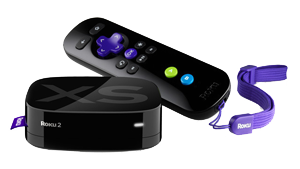Video Directory Structure Option
Roksbox can show your videos based on your video directory structure. With this option, you don't need to create a videos.xml file. But if you want to show details, you can create a small xml file for each video that defines the details for that video.
When using the directory structure option, Roksbox will start at the root folder of your video structure, and scan each subfolder for videos. The first level of folders below your root folder will be used as the main categorys, and each subfolder that contains one of more videos will be used as a subcategory. The names of the folders will be used as the category names. If there are videos in the root folder, they will show up under a main category called Video Root.
A simple directory structure scan will not show any details such as actors, description, length, rating, or poster art on the Roksbox screen. However, you can add these features with some additional work.
To include poster art, put a jpg poster file with the same name as the folder or video in the folder which contains the folder or video. For example, if you have a folder called The Office under a folder called TV, place a file called The Office.jpg in the TV folder. Also, if you have a video called episode 1 in the folder called The Office, place a file called episode 1.jpg in the The Office folder. Do the same for each of your other folders and videos. You don't need to include poster art for the top level folders, because Roksbox doesn't use poser art for main categories.
If you want to include details such as actors, description, length, rating, etc., you can create a small xml file for each video which will go in the same folder as the video. The xml file must have the same name as the video, with a .xml extension. For example, for a video called eposide 1.mp4, you would have an xml file called episode 1.xml in the same folder as the episode 1.mp4 file. Following is the xml file format to use for the detail information:
<video>
<title></title>
<year></year>
<genre></genre>
<mpaa></mpaa>
<director></director>
<actors></actors>
<description></description>
<length></length>
</video>
title - A title which will be used instead of the video name. If no title is specified, the video name will be used for the title.
year - The year the video was created or released.
genre - The genre for this video.
mpaa - The Motion Picture Association of America rating, such as PG, PG-13, etc.
director - The director for this video.
actors - Up to three actors, seperated by commas.
description - A detailed description of the video.
length - The length of the video in minutes. If the video is less that 15 minutes long, you can also include seconds with the format :SS. For example, if the video is 12 minutes and 35 seconds, you could use 12:35.
Valid Rating Values
G
NC-17
PG
PG-13
R
UR
UNRATED
NR
TV-Y
TV-Y7
TV-Y7-FV
TV-G
TV-PG
TV-14
TV-MA
To use your directory structure to show your videos, delete the Video XML Name on the Roksbox Network Settings screen, or do not include a videos.xml file in your video root folder. Also, directory listings must be enabled on your web server.
You also must have your web server and setup information working as described in this tutorial, and your videos must be accessible from your web server.
The recommended poster art size is:
Movie Poster Art (portrait): SD=158x204; HD=214x306
Also, if you want to have more control of the way your categories appear on the video screen, you can use your xml files to organize your categories. For more information on using xml files to organize your categories, click here.
For alternatives to manually creating XML files see the following third-party options:
Using Movie Sheets - Create Movie Sheets, and detail information for videos (Windows only).
Medieer - Create individual XML files for videos (Windows, Mac, Linux).
MS Excel - Create individual XML files for videos using Microsoft Excel. Roku forum member krisbee created an Excel spreadsheet to make creating xml files easier. You can copy/paste information from http://imdb.com into the appropriate spreadsheet fields, then copy/paste the resulting xml file into a text editor and save it as the same name as your video with the extension .xml.
Tip:
Remember to use "Quick Click" to quickly navigate along the top row. Click your left or right mouse button "quickly" (about two clicks per second) to navigate without having to wait for the poster art to be retrieved and displayed on each click.

